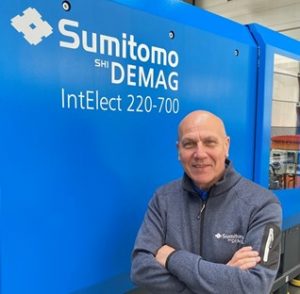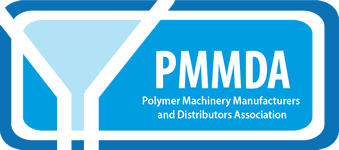Regional Medical Director of the Global Sumitomo (SHI) Demag team Andrew Sargisson shares his industry insight…
MedTech is a multi-billion-dollar manufacturing sector. Unsurprisingly, industry analysts are always keen to pinpoint the newest transformational medical and life science technologies that are expected to shape future treatment pathways.
Regional Medical Director of the Global Sumitomo (SHI) Demag team Andrew Sargisson shares his industry insight and global predictions for the medical market, touching upon how these latest trends are influencing investments in medical injection moulding facilities worldwide.
Thermoplastic and LSR moulding continues to be used extensively to manufacture a huge variety of everyday medical applications. The range is broad and can include implantable components, test tubes, petri dishes, PCR tubes, pipette tips and other labware, as well as medical monitoring devices, drug delivery components and surgical equipment.
In 2023, the global medical injection moulding market size was estimated at USD 22.54 billion[i]. It is expected to grow at a compound annual growth rate (CAGR) of 5.8% from 2024 to 2030. Much of this growth is being driven by advances in self diagnostics, the home healthcare sector, improved healthcare infrastructures in emerging economies, and an aging population, which WHO predicts will double by 2050.
The medical market, particularly diagnostics, was strongly influenced by the Coronavirus pandemic. As anticipated, there has been a natural levelling-off for pandemic-related consumables.
More recently, there is a stronger leaning in the medical market towards larger strategic and more complex projects, such as drug delivery devices and pen style injectors. This is predominantly due to the global growth in diabetes care, where demand for advanced glucose monitoring and insulin delivery devices is propelling innovation. Testament to demand, credible industry reports forecast that the diabetes device market will surpass USD 68.2 billion by 2032, almost triple its 2022 value.
With regard to machinery, there is a strong move towards “copy & paste” systems and processes in both Europe and North America. The global medical team at Sumitomo (SHI) Demag, led by business development director Anatol Sattel, are also noting more requests for remote system access to historical machine data. This is predominantly to assist with troubleshooting and monitoring validated process settings.
To support these efforts, the company’s R&D team continues to develop an IoT dashboard to facilitate data analysis and visualisation, transfer and storage of know-how, as well as maintenance planning and prediction. Within this assistance system, additional autonomous and interconnected functions are being conceived to provide valuable insight into the machine performance and different production variables.
The development of process optimisation systems, integrating material and knowledge with simulation tools is probably the most exciting development on the horizon, claims Sargisson. Such systems will enable processors to observe advanced settings and capture deeper processing insights.
The company’s ultimate vision is an intelligent machine that can independently make predictions about part quality, machine wear and failures and deliver optimisations online. Enabling greater process consistency and allowing for real-time machine maintenance to be adjusted accordingly.
To support these advances and in order to meet the explicit quality management and validation ISO 13485 standards for medical devices, Sumitomo (SHI) Demag introduced new machine user parameters, digital quality control and KPI analytics into its IntElect S medical production package. One of these advanced Med-Spec demo cells is now located in Limerick, Ireland. This will enable customers to perform validations, run tool trials and use the facility to provide valuable process optimisation training to technicians.
Also observed during the pandemic, larger scale adoption of home healthcare and smart diagnostic devices, continues to accelerate at pace.
With significant access to start-up finding, telehealth is the boom-market to watch. It is current exhibiting a CAGR of 19.7% between now and 2030[ii]. Online video and audio consultations with physicians and medical consultants are increasingly being used to deliver quality healthcare while simultaneously reducing heavy work and cost burdens. The telehealth segment is split between services and products. Items such as wearable patient monitoring and telecommunication devices accounts for around one third of the market.
For medical moulders already producing vital monitoring devices, including oxygen, weight, glucose and ECG devices, as well as infusion pumps and cannulas etc. and already meeting the exacting healthcare standards, the transition to homecare device production should be relatively seamless.
High profile acquisitions of diagnostics companies, IPO listings, strategic partnerships, and the rise of virtual care platforms provide further assurance that the diagnostics market is on the cusp of another huge growth curve. This all indicates that there are clearly exciting opportunities ahead for moulders operating in the high tech medical device and diagnostics product development and production space.
In 2024, Sumitomo (SHI) Demag will host its inaugural productivity roadshow. With four stopovers planned for July in the UK and Ireland, including Limerick, customers will be invited to explore all the latest trends, productivity and profit-enhancing technologies. Including medical. Watch this space!
[i] Grand View Research, 2023 report, https://www.grandviewresearch.com/industry-analysis/medical-injection-molding-market
[ii] Telehealth Market to 2030, Fortune Business Insights https://www.fortunebusinessinsights.com/industry-reports/telehealth-market-101065


0 Comments